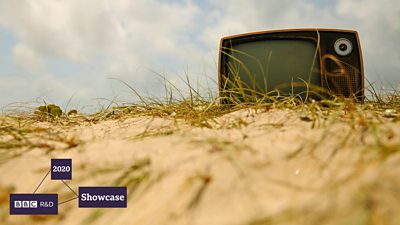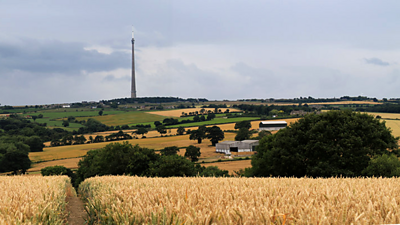
The Questions
Have you ever wondered about the environmental impact of watching TV? Or considered how much energy is used to stream a programme on 成人快手 iPlayer compared to viewing it live on it 成人快手 One?
This week we are releasing a research paper which answers these questions and more, including the total energy use of distributing and consuming 成人快手 TV services. As there are many ways to watch 成人快手 TV content: terrestrial TV, over satellite or cable, or streaming over the internet, we have broken down our findings by platform and identified which aspects are the most energy-intensive.
This work revisits our previous research of over a decade ago and comprehensively updates it. Back then, we were still in the middle of digital switchover, there were no smartphones or smart TVs, and my 23 inch CRT TV was typical. Clearly, the broadcasting landscape has changed considerably since then, both in terms of technology and the audience's behaviour and expectations.
We teamed up with digital footprinting experts, , and at the on this research which looks at:
- understanding the total energy use of our TV services,
- compares the different platforms,
- investigates which parts of the broadcast chain (from transmission to the home) use the most energy and what can be done to reduce it.
Interactive presentation
The Answers
The total energy use across all four platforms of terrestrial, satellite, cable and iPlayer for 2016 was 2,000 GWh which was 0.6% of total UK electricity use.
We found that the energy use of streaming video per hour (0.19 kWh/device-hour) is similar to that of satellite (0.16 kWh/device-hour) and cable (0.15 kWh/device-hour); terrestrial television uses less than half of the other platforms (0.06 kWh/device-hour). (Updated and revised figures in bold, June 2021)
For every platform, we found that the devices in the our audiences' homes used more energy in total than in our distribution chain. Overall, the home equipment (including mobile phones) accounted for over 90% of the total energy use. We found this surprising as often TV transmitters are thought of as being big power hungry sticks on hills compared to TV sets and set-top boxes, but it turns out that when you add them all up together, they massively dominate.
There's much more detail about the methodology, scope and assumptions in the White Paper along with information about the uncertainty and sensitivity of the results.

Image above by on , .
Future Changes
Having worked out our current environmental impacts, we then wanted to know how they might change in the future.
We don't have a crystal ball to make forecasts, so instead, we have explored a range of 'what if...?'; scenarios to see the range of possibilities, and importantly see which variables make the biggest difference. We did this by running our system model with a different set of parameters to reflect each scenario. Although the scenarios are not forecasts or predictions they illustrate where very clearly the 'hot spots', i.e. the most power-hungry parts of the broadcast chain, so that we know where to focus our efforts to make the biggest savings. The scenarios also highlight the potential for energy savings in the system overall.
Sharing our results from afar
One of the three pillars of the is focused on Our Industry. We are committed to reducing the impact of media technology through industry collaboration. We need to work together to find the best way to reduce the environmental impact of the whole broadcasting eco-system, which is why we're sharing everything we've learnt with the rest of the industry.
Ordinarily, this may have involved going to a conference to spread the word, and hopefully opening interesting conversations on working together to reduce our energy consumption.
In light of the recent global pandemic, and also with our sustainability hats on, we thought the next best thing would be to share the findings of our research in an interactive demonstration at the top of the page! And luckily, it also showcases another one of 成人快手 R&D's projects: an object-based media experience design tool called StoryFormer.
StoryFormer allows a more interactive and personalised viewing experience. Although we can't be with you in person to discuss sustainable engineering at the 成人快手, we hope that this demonstration engages you. Please bear in mind this was filmed in our researchers' homes and not with the world class production teams who usually set the high standards of the 成人快手!
If you have any questions or comments, please get in touch, in the meantime we hope you enjoy the presentation, which takes about 20 minutes to navigate.
- -
- 成人快手 R&D - Sustainable Engineering
- 成人快手 R&D - Using Behavioural Data to Assess the Environmental Impact of Electricity Consumption of Alternate Television Service Distribution Platforms
- 成人快手 R&D - The Carbon Footprint of Watching Television
- 成人快手 R&D - From Lens to Screen: An Industry Collaboration for Sustainability
- 成人快手 R&D - Sustainability in broadcast and digital media
- 成人快手 R&D - Sustainability in broadcast and digital media: Video Coverage
- 成人快手 R&D - Understanding and Decreasing the Network Footprint of Catch-up TV
- 成人快手 R&D - A comparison of a Carbon Footprint of Digital Terrestrial Television with Video On-Demand